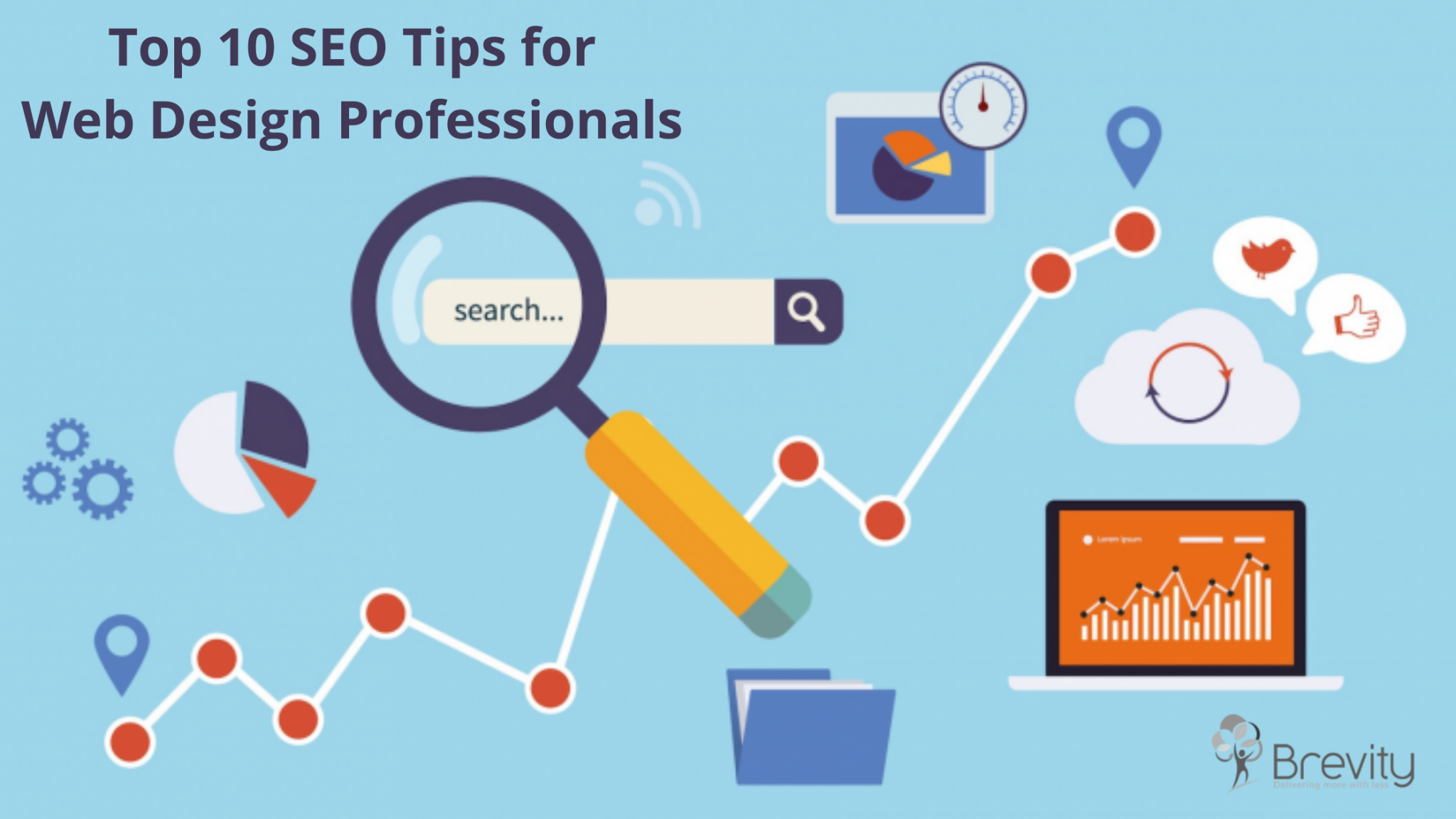
A wonderful web design is extremely important for any business that wants to be successful however if the website doesn’t get a good ranking, not many people think about the website design as one of the factors for it. To get a search engine-friendly website, you need to consider some fundamental SEO service principles as well as professional content development and digital marketing services practices.
Any professional web designer needs to put a lot of thought into solving the encountered while building websites as well as keeping SEO service in mind. Let’s go through the top 10 SEO tips for web design professionals that can result in a search engine-friendly website design layout without sacrificing the style and creativity.
-
Get Search Engine-Friendly Site Navigation
Utilizing Flash is not good for good site navigation if you don’t know how to create Flash objects that are web-crawler-friendly. If you are using Flash, it will be hard for the search engines to crawl your website.
CSS and understated JavaScript can offer almost any elegant effects that you want without sacrificing the search engine ranking.
-
Use Scripts outside the HTML Documents
If you hire a web designer and code your website, ensure that you externalize CSS and If you JavaScript.
Search engines observe a website via what’s given in an HTML document. CSS and JavaScript, if not used well, can add many extra lines of code in the HTML documents, which will make the crawling slower. All search engines want to crawl the website content as swiftly as possible.
-
Make the Content Readable for Search Engine Spiders
Content is the soul of any website so while designing any website, ensure that you use a good content structure with paragraphs, headings, and links.
Websites having lesser content will struggle in search rankings however, you can avoid it if you do proper planning at the designing stages. For instance, don’t utilize images for text except you are using a technique of image text replacement for CSS background.
-
Design Search Engine-Friendly URLs
Search-friendly URLs are not the URLs, which are not easy to crawl like query strings. The finest URLs have keywords, which help in describing the page content.
For instance, consider these URLs for the HVAC website:
- com/services/repairs/
- com/services/commercial-repairs/
- com/services/residential-repairs/
These given URLs are outstanding for the SEO of HVAC. Compared to that, these links aren’t:
- com/services/repairs-final-version/
- com/HVACrepairs4CommercialCompanies
- com/hvacrepairsforCommercialCompanies
You should be careful as some CMSs use auto-generated numbers as well as special codes for the page URLs. Any good CMS will provide you with the capability of customizing and “beautifying” your site URLs with the help of a professional web designer.
-
Block Pages that You Don’t Wish Search Engines to Index
There might be web pages, which you don’t wish to get indexed by search engines. Some pages might add no values to the content or there are web pages you use for testing your designs because you are creating a new website.
Don’t uncover these pages to the web robots as you may have duplicate content problems with search engines and dilute the real content density, as well as these things, might have negative effects on the website’s search engine positions.
The finest way of preventing web pages from getting indexed by search engine spiders is using a robots.txt file, amongst the web files, which will improve the website.
In case, you are using a section of your website for testing, make that password-protected or utilize a local web environment like WampServer or XAMPP.
-
Don’t Ignore the Image Alt Attributes
Ensure that all the image alt attributes are expressive. All the images require alt attributes to become 100% W3C-compliant however, many fulfil this requirement by adding any text. It is better not to use any alt attributes rather than using the wrong alt attributes.
Different search engines read the alt attributes as well as may consider them while determining the page relevancy with the keywords. Probably, it is utilized in ranking the image-based search engines including Google Images.
-
Update Web Pages with New Content
In case, you have a blog on your website, you should post some latest blogs to help your website getting updated now and then. Search engines like to see web page content changing constantly as it suggests that the website is alive and working. With constantly updating content, your website will have a better search engine crawling frequency.
You won’t need to show complete posts as this might cause the issue of duplicate content.
-
Always Use DistinctiveMeta Data
Page titles, keywords, and descriptions, all should be different. Several times, when you hire a web designer, he or she will make a website template but forget to alter metadata and ends up having several pages using the unique placeholder data.
All the pages should have their metadata; this is just one thing, which helps the search engines in getting a superior grasp on how a website structure is constructed.
-
Proper use of Heading Tags
You should properly utilize heading tags having web content because they provide search engines with structural data about HTML documents and they generally position higher values related to other texts on a web page (excluding hyperlinks).
Utilize<h1> tag for main page topics. Use <h2>using<h6> tags for indicating content hierarchy as well asdefining blocks of the same content.
-
Obey W3C Standards
Search engines like well-formed and clean codes. Clean codes make the website easy to index, as well as can be a suggestive factor about how well the website is made.
Obeying the W3C standards forces you to compose semantic markup that can be good for SEO.
Use Brevity Software’s digital marketing services to grow your business.